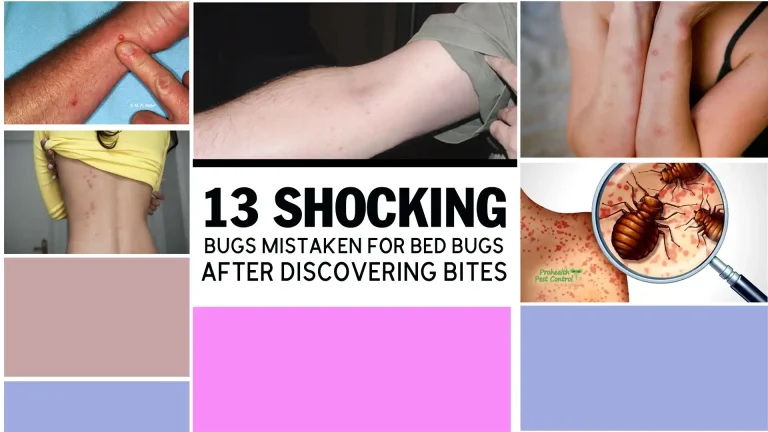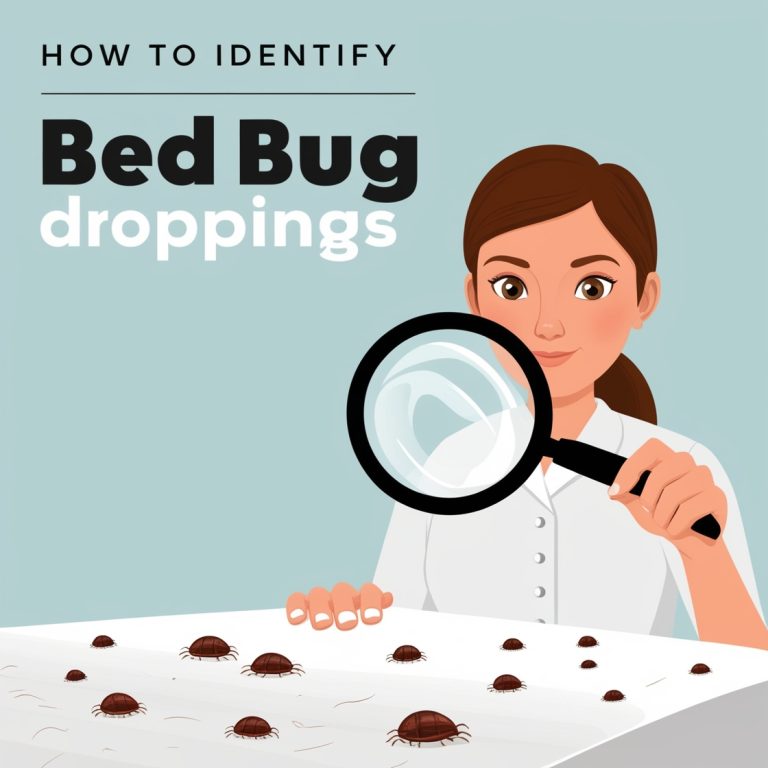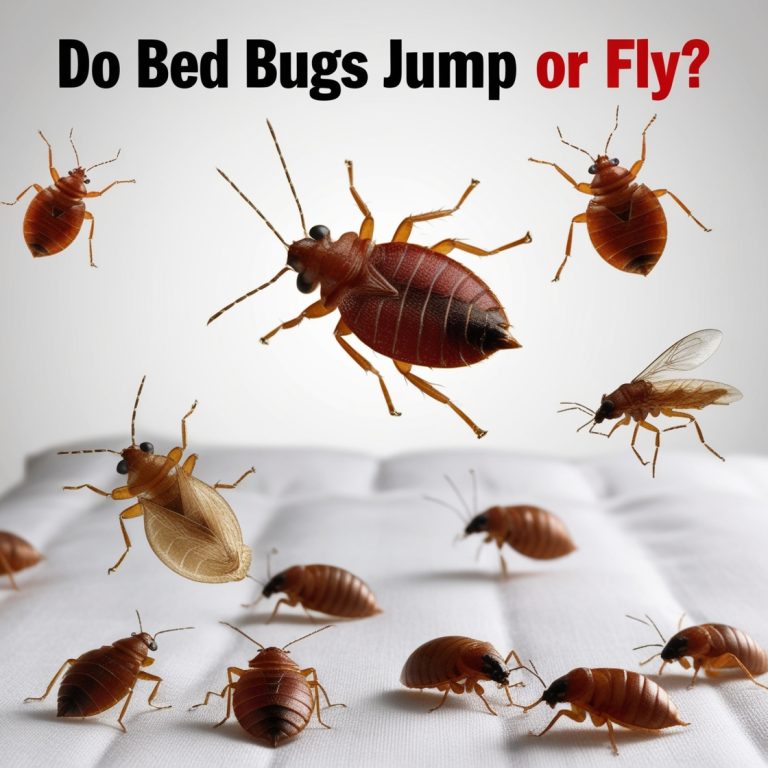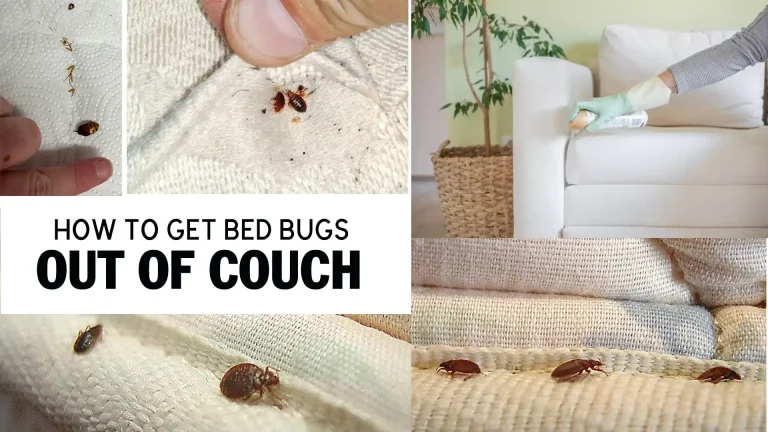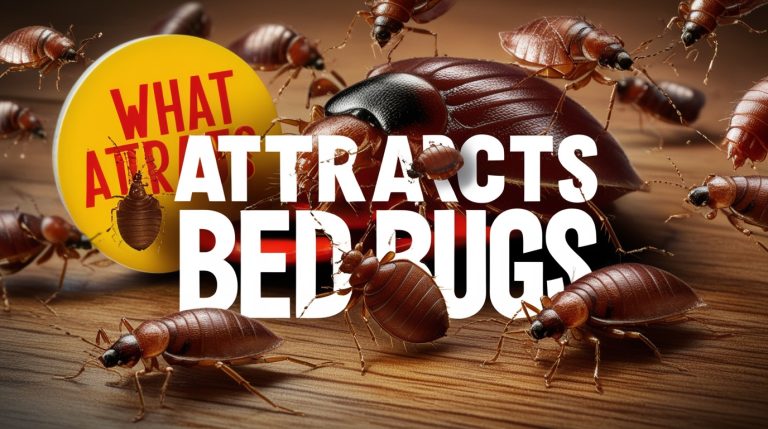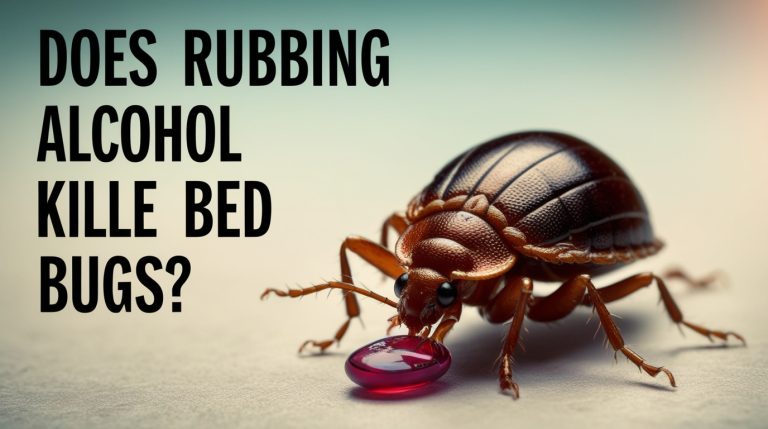Tick vs. Bed Bug: How to Tell the Difference Between These Pests
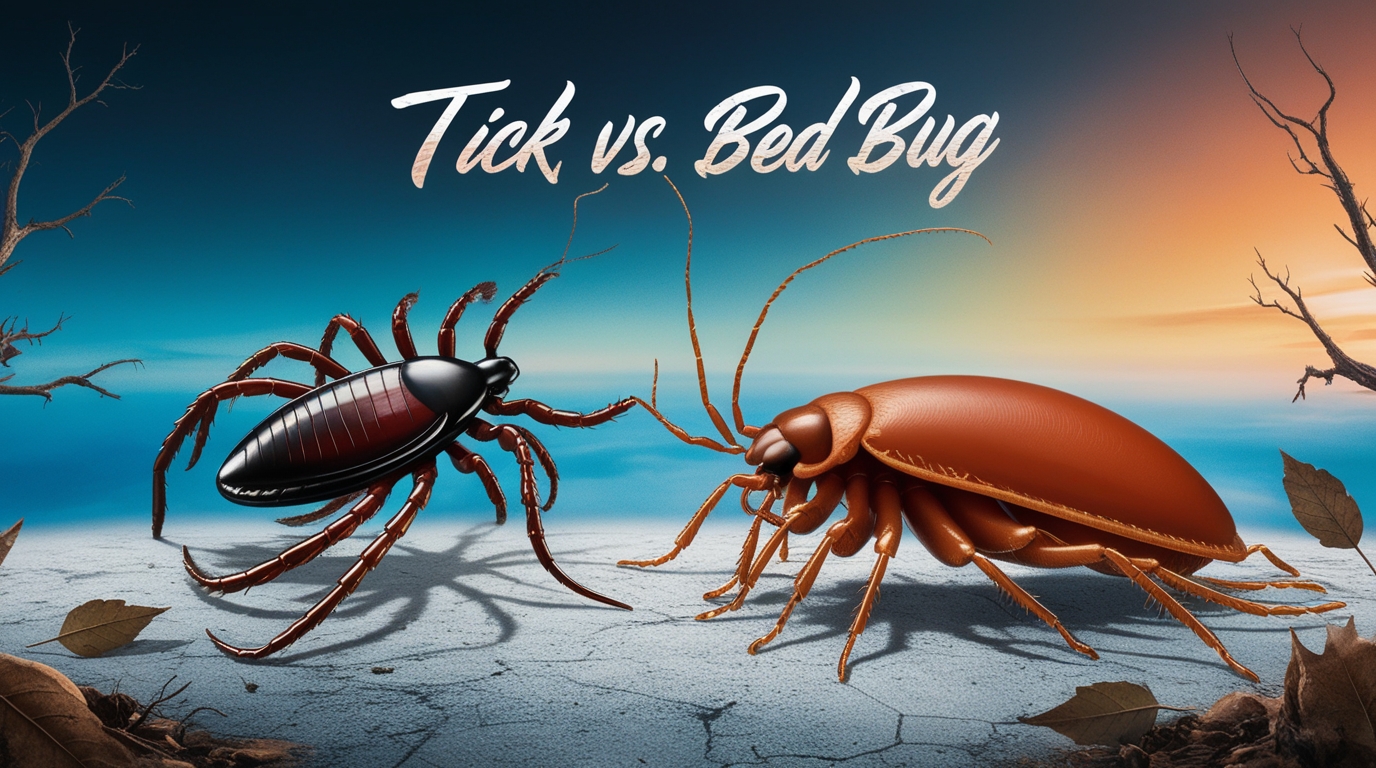
Tick vs. Bed Bug: Learn how to identify these pests by understanding their key differences in appearance, behavior, and habitats. Protect your home from infestations.
Introduction to Ticks and Bed Bugs
Understanding These Common Pests
Ticks and bed bugs are two of the most notorious pests that can invade our living spaces and cause significant discomfort. While both are blood-sucking parasites, they differ in many aspects, from their appearance to their behavior and the potential health risks they pose. This article aims to help you distinguish between these two pests and provide valuable information on how to prevent and control infestations.
Ticks are eight-legged pests belonging to the arachnid family, closely related to spiders and mites. They are known for their ability to attach themselves to hosts and feed on blood for extended periods. On the other hand, bed bugs are insects with six legs, typically found in areas where humans sleep or rest. Both ticks and bed bugs can cause considerable distress and health concerns, making it crucial to understand their characteristics and differences.
The Importance of Proper Identification
Knowing the difference between ticks and bed bugs is essential for effective pest control and prevention. Misidentification can lead to inappropriate treatment methods, wasted time and resources, and potentially prolonged infestations. By learning to tell the difference between these pests, you can take appropriate action quickly and efficiently.
Key Differences Between Ticks and Bed Bugs
Physical Appearance and Size
One of the main differences between ticks and bed bugs is their appearance. Ticks are typically smaller than bed bugs, with adult ticks measuring about 3-5 mm in length before feeding. Ticks have a more rounded body shape and are often narrower than bed bugs. Their coloration can vary depending on the species, ranging from reddish-brown to black.
Bed bugs, on the other hand, are usually larger than ticks, with adult bed bugs measuring about 5-7 mm in length. They have a flatter, more oval-shaped body and are reddish-brown in color. Unlike ticks, bed bugs are wingless and have a distinctive segmented body.
A key difference to remember is that ticks have eight legs, while bed bugs have six legs. This distinction can be crucial when trying to identify these pests, especially in their adult stages.
Habitat and Where They’re Found
Ticks and bed bugs have different preferences when it comes to their habitats. Ticks are typically found outdoors in wooded areas, tall grass, and brushy environments. They prefer environments with high humidity and are often encountered in parks, forests, and even in backyards with overgrown vegetation. Ticks are solitary creatures and do not form colonies.
Bed bugs, however, are primarily indoor pests. They are often found in areas where humans sleep or rest, such as beds, couches, and other furniture. Bed bugs prefer to live in close proximity to their human hosts and can quickly spread throughout a home or building. Unlike ticks, bed bugs form large populations and can infest entire rooms or buildings if left unchecked.
Feeding Habits: How Ticks and Bed Bugs Feed
The feeding habits of ticks and bed bugs also differ significantly. Ticks prefer feeding on animals, including wildlife, pets, and occasionally humans. They attach themselves to their host and can remain feeding for several days if undisturbed. As ticks feed, they become engorged with blood, increasing significantly in size.
Bed bugs, on the other hand, prefer feeding on humans. They typically feed at night while their hosts are asleep, with feeding sessions lasting only a few minutes. Unlike ticks, bed bugs do not remain attached to their host after feeding. Instead, they retreat to nearby hiding spots after each meal.
Bite Patterns and Symptoms
Identifying Tick Bites
Tick bites often go unnoticed initially due to the tick’s small size and the numbing agents in their saliva. A tick bite typically appears as a single red spot, sometimes with a bulls-eye pattern around it. This pattern is particularly associated with Lyme disease, one of the most well-known tick-borne illnesses.
Ticks can transmit various diseases, including Lyme disease, Rocky Mountain spotted fever, and Southern tick-associated rash illness. These conditions can cause symptoms such as fever, rash, and joint pain. It’s important to note that not all tick bites lead to disease transmission, but prompt removal of attached ticks is crucial to minimize the risk.
Recognizing Bed Bug Bites
Bed bug bites often appear in clusters or lines on exposed skin. They typically cause small, red, itchy welts that can be mistaken for other insect bites. Unlike tick bites, bed bug bites do not usually transmit diseases. However, bed bug bites can cause allergic reactions in some individuals, ranging from mild irritation to more severe symptoms.
Bed bug bites often appear on areas of the body that are exposed during sleep, such as the arms, legs, and neck. The bites may not be noticeable immediately and can take several days to develop in some cases.
Health Risks Associated with Each Pest
While both ticks and bed bugs can cause discomfort, ticks generally pose a greater health risk due to their ability to transmit various diseases. Ticks can carry a variety of pathogens that cause illnesses such as Lyme disease, anaplasmosis, and babesiosis. These diseases can have serious long-term health consequences if left untreated.
Bed bugs, unlike ticks, are not known to transmit diseases directly through their bites. However, bed bug infestations can lead to secondary health issues such as skin infections from scratching, allergic reactions, and psychological distress due to sleep disturbances and the stigma associated with infestations.
Prevention Strategies
Tick Prevention Methods
To prevent ticks, focus on both personal protection and environmental management:
1. Wear long-sleeved shirts and long pants when outdoors, especially in wooded areas.
2. Use EPA-approved insect repellents containing DEET or picaridin.
3. Conduct regular tick checks after spending time outdoors.
4. Keep your lawn mowed and remove leaf litter to reduce tick habitats.
5. Create a barrier of wood chips or gravel between your lawn and wooded areas.
6. Consider using tick control products on pets, as recommended by a veterinarian.
Bed Bug Prevention Techniques
To prevent bed bugs, focus on vigilance and cleanliness:
1. Inspect second-hand furniture thoroughly before bringing it into your home.
2. Use protective covers on mattresses and box springs.
3. Reduce clutter in your home to minimize hiding spots for bed bugs.
4. Vacuum frequently, paying special attention to cracks and crevices.
5. Be cautious when traveling, inspecting hotel rooms and keeping luggage off the floor.
6. Wash and dry clothes on high heat after returning from trips.
General Bug Prevention Tips
Some general pest prevention tips that work for both ticks and bed bugs include:
1. Seal cracks and crevices in your home’s exterior to prevent pest entry.
2. Regularly inspect your home for signs of pest activity.
3. Maintain good sanitation practices both indoors and outdoors.
4. Educate yourself and family members about pest identification and prevention.
How to Get Rid of These Pests
Eliminating Ticks from Your Environment
To get rid of ticks:
1. Keep your lawn short and remove leaf litter and tall grass.
2. Use tick-control landscaping techniques, such as creating barriers between wooded areas and your lawn.
3. Consider applying pesticides designed for tick control in your yard.
4. Treat pets with veterinarian-approved tick prevention products.
5. If you find a tick on yourself or a pet, remove it carefully with fine-tipped tweezers, grasping the tick as close to the skin’s surface as possible.
Eradicating Bed Bug Populations
To get rid of bed bugs:
1. Thoroughly clean and declutter infested areas.
2. Wash and dry all fabrics on high heat settings.
3. Use a stiff brush to scrub mattress seams and remove bed bugs and their eggs.
4. Vacuum your home thoroughly, disposing of the vacuum contents in a sealed plastic bag.
5. Encase mattresses and box springs in bed bug-proof covers.
6. Consider using bed bug-specific insecticides, following label instructions carefully.
When to Call Professional Pest Control
While many pest issues can be addressed with DIY methods, some situations require professional intervention. Consider calling professional pest control services if:
1. You have a large or persistent infestation of ticks or bed bugs.
2. DIY methods have failed to eliminate the problem.
3. You’re dealing with both tick and bed bug infestations simultaneously.
4. You’re unsure about proper pest identification or treatment methods.
5. You have concerns about the safe use of pesticides, especially if you have children or pets.
Professional pest control experts have the knowledge, experience, and access to specialized tools and treatments that can effectively eliminate both ticks and bed bugs.
Conclusion: Telling the Difference and Taking Action
Recap of Tick vs. Bed Bug Differences
In summary, the key differences between ticks and bed bugs include:
1. Appearance: Ticks have eight legs and are typically smaller, while bed bugs have six legs and are usually larger.
2. Habitat: Ticks prefer outdoor environments, whereas bed bugs are found indoors, often in bedding and furniture.
3. Feeding habits: Ticks attach to hosts for extended periods, while bed bugs feed quickly and retreat.
4. Health risks: Ticks can transmit various diseases, while bed bugs primarily cause discomfort and potential allergic reactions.
Importance of Early Detection and Prevention
Understanding the differences between ticks and bed bugs is crucial for early detection and effective prevention. By knowing what to look for and implementing appropriate prevention strategies, you can significantly reduce the risk of infestations and the associated health concerns.
Remember, whether dealing with ticks or bed bugs, prompt action is key. If you suspect an infestation, don’t hesitate to take steps to address the issue or seek professional help. With the right knowledge and approach, you can protect yourself, your family, and your home from these persistent pests.

